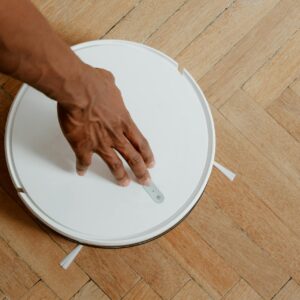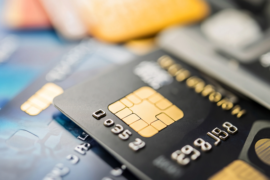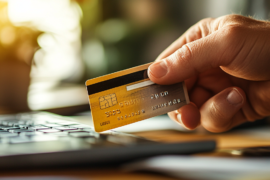This article may contain references to products or services from one or more of our advertisers or partners. We may receive compensation when you click on links to those products or services. Nonetheless, our opinions are our own.
The information presented in this article is accurate to the best of our knowledge at the time of publication. However, information is subject to change, and no guarantees are made about the continued accuracy or completeness of this content after its publication date.
Impulse buying can easily ruin your financial stability by making you spend more money than you need to and save less. Many people buy things they didn’t plan to because of their feelings, marketing strategies, or the ease of shopping online. These times may make you feel positive right away, but they usually lead to money regret later. You can learn to spot bad habits, plan how to spend money wisely, and secure your financial future.
We’ll discuss useful ways to stop buying things on impulse, make a structured budget, and use decision-making strategies that help you be more financially responsible. By learning more about your spending habits and shopping in a smart way, you can make more deliberate choices that will help you be financially successful in the long run.
- Why Impulse Buying Happens
- Building a Budget That Encourages Mindful Spending
- The 24-Hour and 30-Day Rules: Effective Tools for Thoughtful Purchasing
- Practical Ways to Reduce Shopping Temptations
- Final Thoughts
- Frequently Asked Questions
- What is impulse buying, and why is it common?
- How can I recognize my impulse buying triggers?
- What are some effective methods to prevent impulse spending?
- How can I strengthen my savings while controlling spending?
- Are there apps that can assist with impulse control?
- What should I do if I make an impulse purchase?
- Recommended Reads
Why Impulse Buying Happens
Unplanned purchases are often triggered by emotional and psychological factors rather than actual necessity. Stress, boredom, excitement, and social influence can all contribute to spontaneous spending decisions. Retailers and online stores also use strategic tactics—such as limited-time discounts and targeted advertisements—to encourage purchases without careful consideration.
To gain better control over spending, it is helpful to recognize personal triggers. Some common influences include:
- Emotional spending: Shopping as a response to stress, boredom, or excitement.
- Marketing pressure: Sales, limited-time offers, and advertisements designed to create urgency.
- Social comparison: Feeling the need to keep up with trends or match the spending habits of peers.
- Ease of purchase: One-click buying, stored payment information, and online promotions that make shopping effortless.
Recognizing these triggers is the first step in resisting impulsive spending. By addressing the underlying motivations behind unplanned purchases, it becomes possible to develop strategies that encourage more deliberate financial decisions.
Building a Budget That Encourages Mindful Spending
A well-planned budget is one of the most effective tools for managing impulse purchases. Without a clear financial structure, it is easy to overspend without realizing the long-term consequences.
Tracking expenses for a month can offer important information about spending habits, helping to identify patterns and areas where adjustments may be necessary. Once a spending overview is established, categorizing expenses into essential and non-essential purchases can create a clearer financial picture.
| Category | Examples |
|---|---|
| Essential Expenses | Rent, groceries, healthcare, transportation |
| Discretionary Spending | Dining out, entertainment, online shopping |
To manage spending more effectively, consider these budgeting techniques:
- Set specific spending limits for non-essential purchases to prevent unnecessary splurges.
- Adopt a cash-based system for discretionary expenses to make transactions feel more tangible.
- Establish clear financial goals to create motivation for saving rather than spending.
- Use expense-tracking apps to monitor purchases and stay accountable.
Having a structured budget allows for better control over spending decisions, reducing the likelihood of impulse purchases while ensuring that financial goals remain a priority.
Voted "Best Overall Budgeting App" by Forbes and WSJ
Monarch Money helps you budget, track spending, set goals, and plan your financial future—all in one app.
Get 50% OFF your first year with code MONARCHVIP
The 24-Hour and 30-Day Rules: Effective Tools for Thoughtful Purchasing
Two simple yet powerful techniques can help curb impulse spending: the 24-hour rule and the 30-day rule. These approaches encourage delayed decision-making, allowing time for rational evaluation before making a purchase.
The 24-Hour Rule
For smaller, non-essential purchases, waiting 24 hours before completing a transaction can provide time to reflect on whether the item is truly necessary. Often, the urge to buy fades after taking a step back.
The 30-Day Rule
For larger purchases, applying the 30-day rule can be even more effective. This method involves waiting an entire month before making a decision, allowing for thorough consideration of whether the item is worth the expense.
A purchase evaluation table can help track potential buys and their final outcomes:
| Item | Date Considered | Reason for Purchase | Final Decision |
|---|---|---|---|
| New Smartphone | 02/10/2024 | Upgrade, but current phone still works well | Not purchased |
| Designer Jacket | 02/15/2024 | Impulse desire, already own similar clothing | Not purchased |
| Work Laptop | 02/20/2024 | Needed for productivity, researched best options | Purchased |
By implementing these methods, it becomes easier to distinguish between necessary and impulsive purchases, leading to better financial decisions.
Practical Ways to Reduce Shopping Temptations
Avoiding impulse purchases often requires making adjustments to shopping habits and lifestyle choices. Some effective strategies include:
- Unsubscribing from retail emails and notifications to minimize exposure to marketing messages.
- Deleting shopping apps or removing stored payment information to make online purchases less convenient.
- Creating a wishlist for non-essential items and reviewing it after a set period to determine if they are still desired.
- Shopping with a list to avoid purchasing unnecessary items during store visits.
- Using cash instead of credit cards to make spending feel more deliberate and controlled.
Small changes in behavior can lead to significant improvements in financial discipline, making it easier to resist unplanned purchases.
Final Thoughts
Managing impulse buying requires awareness, patience, and consistent effort. By identifying spending triggers, creating a structured budget, and applying decision-making strategies like the 24-hour and 30-day rules, it becomes easier to make intentional financial choices. Small adjustments in shopping habits can lead to long-term improvements, helping to build financial security and a more mindful approach to spending.
Frequently Asked Questions
What is impulse buying, and why is it common?
Impulse buying occurs when purchases are made spontaneously, often influenced by emotions, sales tactics, or convenience. It is a common behavior because modern shopping environments are designed to encourage quick decisions.
How can I recognize my impulse buying triggers?
Keeping a record of past purchases and noting the emotions or situations that led to them can help identify spending patterns. Reviewing this information allows for a better understanding of personal shopping habits.
What are some effective methods to prevent impulse spending?
- Implementing the 24-hour and 30-day rules for delayed purchasing decisions.
- Setting clear spending limits for non-essential purchases.
- Using cash instead of credit cards to make transactions feel more tangible.
- Limiting exposure to advertisements and sales promotions.
How can I strengthen my savings while controlling spending?
Redirecting money that would have been spent on impulse purchases into a dedicated savings account can help build financial security. Automating savings transfers and setting specific financial goals can also encourage more disciplined spending habits.
Are there apps that can assist with impulse control?
Yes, budgeting and expense-tracking apps analyze into spending habits, send reminders about financial goals, and help monitor discretionary expenses.
What should I do if I make an impulse purchase?
If an unnecessary purchase is made, consider returning the item if possible. If returning is not an option, reassess spending strategies to prevent similar mistakes in the future. Learning from these moments can help refine financial habits over time.

Reviewed and edited by Albert Fang.
See a typo or want to suggest an edit/revision to the content? Use the contact us form to provide feedback.
At FangWallet, we value editorial integrity and open collaboration in curating quality content for readers to enjoy. Much appreciated for the assist.
Did you like our article and find it insightful? We encourage sharing the article link with family and friends to benefit as well - better yet, sharing on social media. Thank you for the support! 🍉
Article Title: Impulse Control: How to Stop Impulse Buying and Boost Your Savings
https://fangwallet.com/2025/06/11/control-impulse-buying/The FangWallet Promise
FangWallet is an editorially independent resource - founded on breaking down challenging financial concepts for anyone to understand since 2014. While we adhere to editorial integrity, note that this post may contain references to products from our partners.
The FangWallet promise is always to have your best interest in mind and be transparent and honest about the financial picture.
Become an Insider

Subscribe to get a free daily budget planner printable to help get your money on track!
Make passive money the right way. No spam.
Editorial Disclaimer: The editorial content on this page is not provided by any of the companies mentioned. The opinions expressed here are the author's alone.
The content of this website is for informational purposes only and does not represent investment advice, or an offer or solicitation to buy or sell any security, investment, or product. Investors are encouraged to do their own due diligence, and, if necessary, consult professional advising before making any investment decisions. Investing involves a high degree of risk, and financial losses may occur including the potential loss of principal.
Source Citation References:
+ Inspo
There are no additional citations or references to note for this article at this time.












































